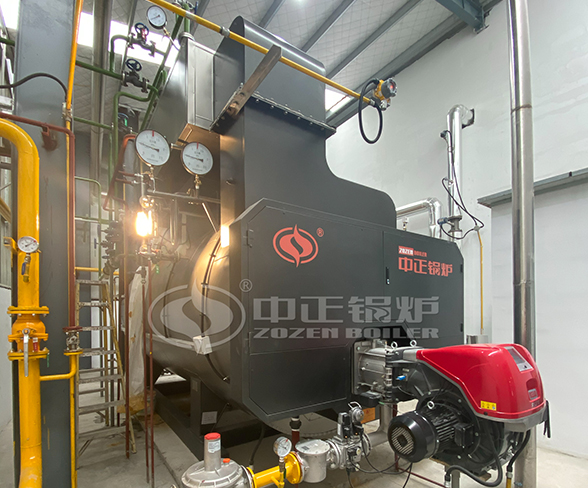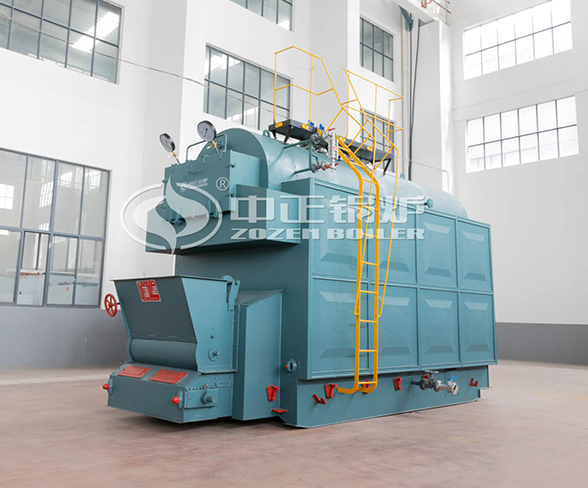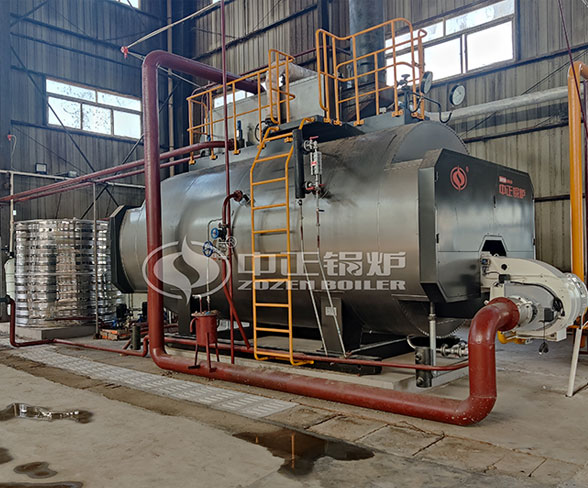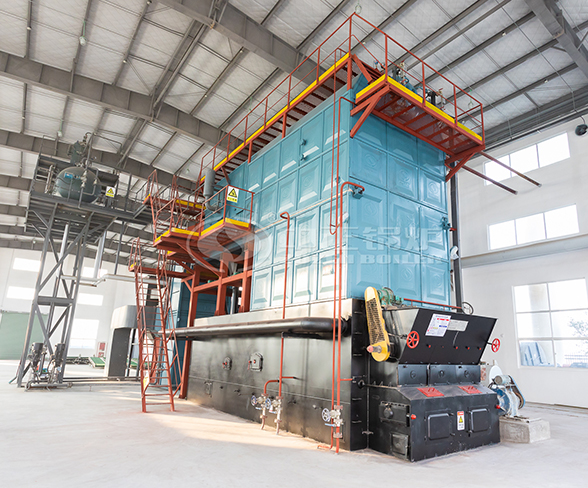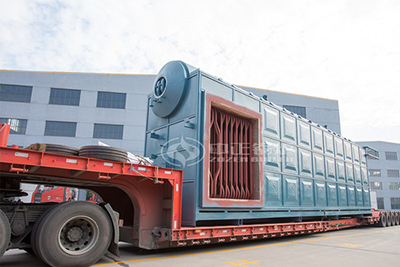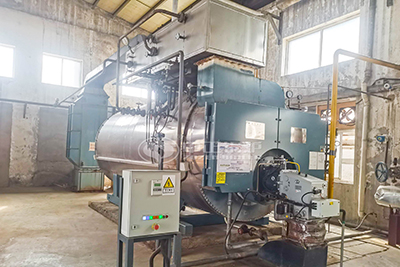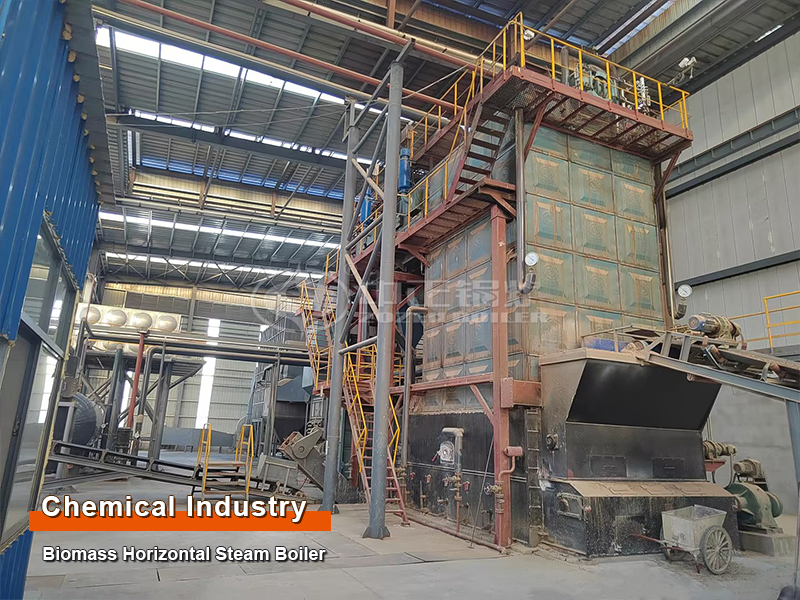Industrial gas boilers are a key component in the total industry output and in the total energy consumption of the United States. As an illustration, in the US, the energy consumption of industrial boilers accounts for 37% of the total industrial energy consumption. Additionally, about 51% of the US industrial boiler capacity uses natural gas as their primary fuel.
Steam boilers heat hot water to boiling in order to generate steam for use in different applications. These include turbines for power generation, various industrial heating applications (e.g. cement production), and agricultural soil steaming.
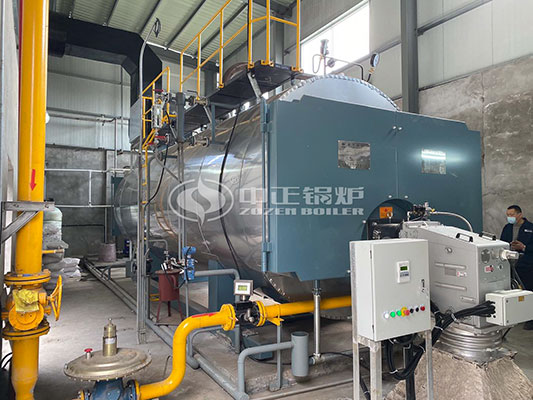
Fire Tube Boiler diagram Fire-tube boilers feed hot gases from the heating source through tubes. These tubes are positioned inside a water filled drum in order to transfer heat to the water. Fire-tube boilers are more fuel efficient and easier to operate than water-tube boilers, and because of their simple construction also tend to have a lower initial cost. However, because the thickness of the outer shell (which contains and pressurizes the water) is limited by cost and practicality, fire-tube boilers are typically limited to low pressure and low to medium capacity applications. Fire-tube boilers are subdivided into three groups.
Water-tube Boiler diagramWater-tube boilers feed water (rather than combustion gases) through tubes. A large number of these tubes run through a boiler drum (casing) where heated gases or heating elements surrounding the tube bring the water to its boiling point. This heat transfer method makes water-tube boilers more thermally efficient than fire-tube boilers. However, they are more complex to construct and are less tolerant of poor water quality, requiring water treatment and/or solids filtering in order to operate effectively. These boilers are selected when steam demand and steam pressure requirements are high.
The actual cost of gas boilers may vary depending on your location, the size and efficiency of the boiler, whether there are any installation complications, and other factors.
- Lower output and/or mid-efficiency gas boilers cost $2,500 to $5,000 installed; higher output and/or high-efficiency gas boiler replacement cost is $5,000 to $10,000 or more. This price should include removal and disposal of the old boiler.
- High-efficiency gas boiler installation may require the addition of a chimney liner at a cost of $500 to $2,000.
- If removing and disposing of the old oil tank is required, and not included in the initial estimate, this could cost $500 to $2,500 or more. Annual boiler maintenance and inspection costs $100 to $300.




